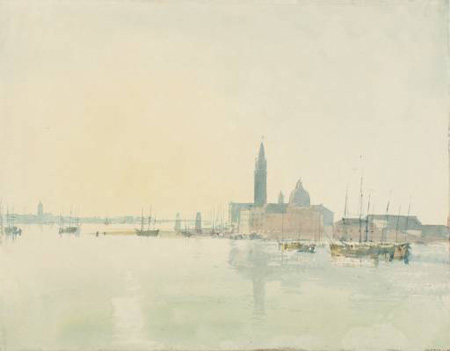San Giorgio Maggiore lighthouses
I guess that Pevsner would have classed most lighthouses as buildings, not architecture.† But in Venice there is a pair of lighthouses that must belong in the architecture class, and I’m putting them on my visiting list. I hope to see them next month.

In 1797 Napoleon’s troops overran the Veneto, the last Doge of Venice capitulated, and the old republic ended. With the new French regime, and the Austrian regime that followed, came a push to knock down old buildings and make urban ‘improvements’ in the neo-classical mode. A duty-free port was established on the island of San Giorgio.
Improved harbour facilities and quayside buildings were provided, and the new status of the island was symbolized by two Istrian-stone lighthouse towers designed in 1813 by Selva’s pupil Guiseppe Mezzani, himself a professor of architecture at the Venetian Accademia. These are perhaps the most attractive legacy of the Napoleonic period in Venice. Standing guard beside Palladio’s church of San Giorgio Maggiore, the towers pay tribute to the earlier master, with their windows set into rusticated walls like those of Palladio’s Villa Malcontenta. Even at the height of the neo-classical period, Palladian ideas still played an important part in the teachings of the Venetian Accademia. However, the elegant simplicity of the open lanterns that surmount the two lighthouses bear the stamp of neo-classicism.††
† In An outline of European architecture (Penguin, 1968, p. 15) Nikolaus Pevsner wrote: A bicycle shed is a building; Lincoln Cathedral is a piece of architecture. Nearly everything that encloses space on a scale sufficient for a human being to move in is a building; the term architecture applies only to buildings designed with a view to aesthetic appeal.
†† Deborah Howard, The architectural history of Venice, Yale, 2002, p. 266.